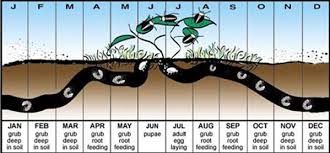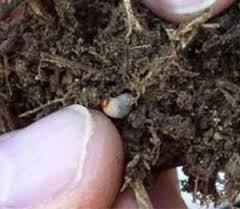This is especially important if you’ve had problems with grubs in the past.
The key to controlling grubs is to kill them before they hatch and begin to cause damage to your lawn. In spring or early summer, apply a preventative grub control product, such as an Insecticide. This is especially important if you’ve had problems with grubs in the past.
What is the best time to treat for grubs?
The preventive compound chlorantraniliprole should ideally be applied in April or May to control grubs that would be damaging turf in the fall as it will take longer for the material to move to where the grubs will be feeding in July. To kill grubs in the spring or fall, use carbaryl or trichlorfon.

Lawn 2&3 Insecticide/Feed : May/June & July/August: Controls sod webworm,{ Larval stage of lawn moths} Billbug { larval stage of a typical weevil/ snout Beetle}, and white grubs. This too has a balanced fertilizer.
How often should you apply grub control?
Grub control measures need to be taken on annual basis to work consistently. Skipping a year may be fine, but if any beetles have laid their eggs in your lawn’s soil over the course of that last year, you can be looking at a seriously damaged lawn by mid-fall.
Why do I have so many grubs?
Many lawn issues that resemble grub damage can be caused by something else, including disease, drought stress, hairy chinch bugs, sod webworms, shade, compaction, and more. In the early spring, for example, many homeowners suspect grub damage because of the condition of their lawn after snow melt.

